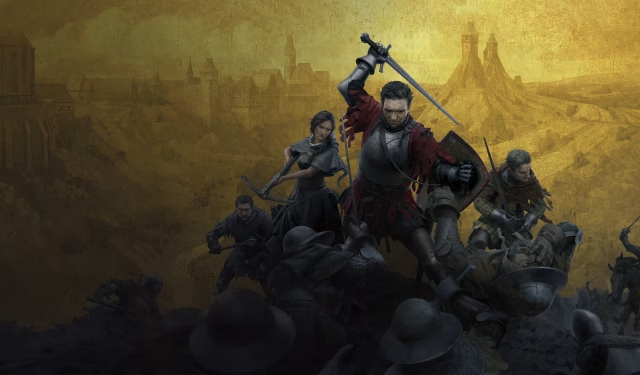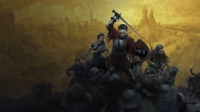Introduction
In a captivating reaction video, sword expert Matt Easton, a renowned Historical European Martial Artist and owner of the Schola Gladiatoria fencing club, dives into the intricate fighting mechanics and historical accuracy of Kingdom Come: Deliverance 2 (KCD2). This open-world action RPG developed by Warhorse Studios draws players into its medieval setting, showcasing realistic sword combat, siege warfare, and weapon dynamics. This article will explore Easton’s insights and highlights from his analysis, detailing the game’s combat mechanics, the historical context of its features, and the implications for players seeking an authentic experience.
Sword vs. Sword Combat
Easton begins his analysis by appreciating the developers’ commitment to realistic sword fighting mechanics. He emphasizes the significance of guard positions, which provide a tactical foundation for combat. In historical martial arts, fighters adopt specific stances to maximize defense and prepare for strikes. KCD2 emulates this with characters displaying a variety of guard positions, showcasing the game’s dedication to authenticity. Easton points out the use of both the sword and the user’s left hand for grappling and punches, which adds depth to the fighting style and reflects the realities of historical combat.
However, he critiques the portrayal of certain moves, particularly a cutting motion against chain mail. While the animations are visually engaging, Easton argues that such strikes would be ineffective in reality. Instead, he highlights the efficient use of thrusts, which could penetrate gaps in armor—a crucial aspect of medieval fighting depicted in the game. Overall, the swordplay implemented in KCD2 strikes a commendable balance between entertainment and authenticity.
Mace and Shield Combat Dynamics
Moving to the combat involving a mace and shield, Easton reiterates the advantage provided by a shield in melee confrontations. He notes that historically, the asymmetry between an armed opponent with a shield and another with just a sword heavily favors the shield-bearer. This principle is well represented in KCD2, where the interaction between the two fighters highlights the shield’s advantages, including defense and tactical maneuverability.
Easton expresses a desire for the combat speed to be more dynamic, as the current animations presented appear sluggish. He advocates for a brisk pace to better simulate the intensity of real battles whereby timing and speed are paramount. The inclusion of various combat techniques, such as thrusts and strikes to less protected areas, emphasizes a diversified approach to melee engagements, crucial for an immersive medieval combat experience.
Siege Warfare Representation
As the gameplay shifts to siege warfare, Easton praises the developers for their attention to historical detail. He observes the encampment layout and the presence of large shields called pavises—central components in medieval siege tactics. These shields allowed attackers to advance while providing cover from projectiles, illustrating the strategic depth involved in such battles.
Despite these positives, Easton points out a deficiency in the attackers’ approach. He notes the lack of effective covering fire—an essential tactic during siege operations to suppress enemy defenses. Additionally, the slow movements of characters during crucial siege segments detract from the overall realism and excitement of gameplay. These factors underline the high stakes and strategic planning required during medieval sieges.
The Role of Gunpowder Weaponry
One of the most intriguing aspects discussed is the inclusion of firearms in KCD2, reflecting the evolution of warfare during the late medieval period. Easton highlights that while armor was often effective against swords and arrows, firearms represented a game-changer due to their unparalleled power to penetrate defenses. The portrayal of firearm usage in the game showcases a lesser-explored dimension of medieval combat, inviting players to engage with a pivotal moment in military history.
While Easton rates the firearm loading mechanics as effective—albeit simplified for gameplay—he acknowledges the potential for deeper combat strategies incorporating these weapons. This element adds further layers of complexity and historical context to the game’s warfare and sets the stage for thrilling confrontations.
Conclusion
In summary, Kingdom Come: Deliverance 2 integrates a rich tapestry of historical combat mechanics, from realistic swordplay to tactical siege warfare and the impactful introduction of firearms. Matt Easton’s in-depth analysis provides valuable insights into the game’s authenticity and the importance of historical accuracy in engaging storytelling. As fans await the game’s release, questions still loom regarding the pacing of combat and its execution. How will players adapt to this intricate mix of history and gameplay? The anticipation continues for a title that promises not only entertainment but a deep dive into medieval martial arts.
https://www.youtube.com/watch?v=lXp3bhUEjy4


